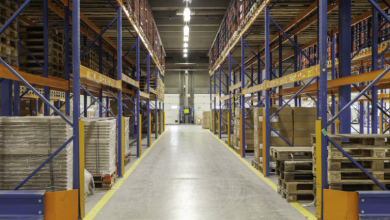
How To Embrace Modernity In Your Restaurant Operations
The definition of a ‘restaurant’ is ever-evolving. You may be wondering if conventional brick-and-mortar restaurants are still relevant in 2022. The reality is people are social beings who enjoy getting together to eat or drink with family, friends, and other acquaintances. Thus, restaurants located at physical venues would still be very much part of our socio-economic landscape.
However, demand for takeout and delivery services has increased in recent years – primarily due to the pandemic and also because technology has opened up numerous possibilities for the food and beverage business. Is your restaurant business in line with these emerging trends? Would you be able to sustain your business for the next few years as more tech-enhanced solutions pop up? How can you address your customer bases’ new preferences and needs? These are important questions to ask if you want to be on top of your food and beverage game. In this article, let’s explore several “smart” ways to ensure your restaurant business is future-proof for 2022 and beyond.
- The Rise of Restaurant Automation
It’s possible (and even preferable) for humans and automation to not only coexist harmoniously, but also complement each other. Automation, artificial intelligence and all things of digital nature have long been a source of fear for doomsday theorists, Luddites, and individuals who are simply uncomfortable with change (remember Y2K?). The harsh reality is that cutting-edge restaurant technology boosts earnings for the business owner while also increasing customer happiness by providing a more personalised, seamless, and customised experience.
With proper automation, there is more time and space for employees to focus on taking care of customers. The use of tablets for real-time table-to-table ordering process allows people to take their time when placing their orders. Using tablets, restaurants can display stunning photos of their menu items with captivating and enticing descriptions while allowing customers to make changes or customise orders according to their dietary restrictions or personal preferences. More in-depth communication is still possible – all thanks to the presence of service staff.
- Endless Possibilities from our Smartphones
When it comes to the food and beverage service industry, mobile technology is now being leveraged to increase foot traffic to physical establishments. Staff can now spend less time taking phone calls when using a POS system that interfaces with third-party online ordering apps for takeout and delivery orders. Customers can place orders from any place, anytime. All they need to do is download an app and have reliable internet connection on their phones.
- Omnichannel Marketing for Higher Sales
People’s buying habits have become increasingly complex in recent years. In terms of getting food, they don’t just walk into a restaurant and order. Most of the time, consumers go online, read reviews, look at websites, compare them and browse on third-party food review and delivery app, before deciding what to order.
Taking this shopping trend into consideration, your restaurant can also offer a seamless experience for customers who purchase your food both online and in-store by using an integrated marketing strategy to cover the entire customer journey. This can be achieved using a digital purchase process and payment platform. This means you can focus on every interaction a customer has with your business while also ensuring there are no roadblocks in the sales process.
When it comes to making a purchase, many customers gravitate towards using various channels. It’s not too bold a move to try and be on all of them as it is about maximising your reach. Omnichannel marketing can be your recipe for success.
- Give and Take with Brand Loyalty
Omnichannel customers are not only more likely to spend more via numerous channels, they also tend to be more loyal to a particular brand they are familiar with. When customers communicate with your brand, loyalty POS add-on features can help them feel at ease and reassured throughout the ordering and purchasing process.
- Data is the Key
A good POS system takes advantage of digital technologies to gather more information about your customers. This information can then be used to improve and personalise client experiences. Gather data on the ordering behaviours and spending trends of your clients. Track them to learn the shopping trends. This way, you can generate offers and marketing content that will entice people to patronise your restaurant – both online and in-store.
With the right know-how and tools like a POS system, self-ordering kiosk, and table ordering system, future-proofing your restaurant business can be a seamless and streamlined process. If you are uncertain how to do this, talk to a POS systems provider to find out how you can link all available sales channels and provide customers with a consistent experience across all platforms, including in-house dining at your physical restaurant.



